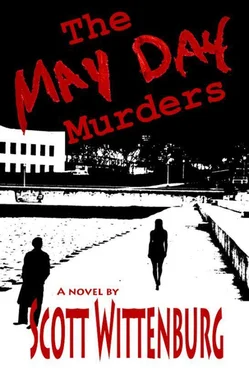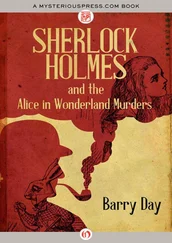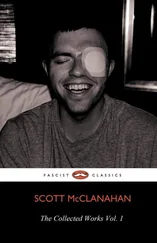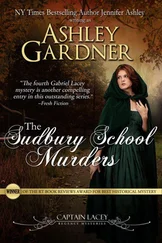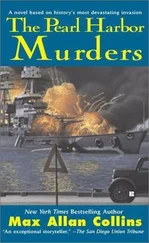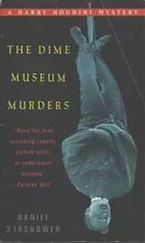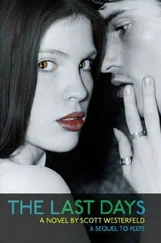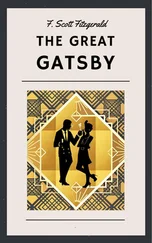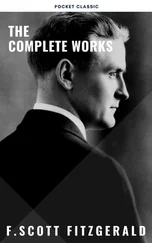Scott Wittenburg - The May Day Murders
Здесь есть возможность читать онлайн «Scott Wittenburg - The May Day Murders» весь текст электронной книги совершенно бесплатно (целиком полную версию без сокращений). В некоторых случаях можно слушать аудио, скачать через торрент в формате fb2 и присутствует краткое содержание. Жанр: Триллер, на английском языке. Описание произведения, (предисловие) а так же отзывы посетителей доступны на портале библиотеки ЛибКат.
- Название:The May Day Murders
- Автор:
- Жанр:
- Год:неизвестен
- ISBN:нет данных
- Рейтинг книги:5 / 5. Голосов: 1
-
Избранное:Добавить в избранное
- Отзывы:
-
Ваша оценка:
- 100
- 1
- 2
- 3
- 4
- 5
The May Day Murders: краткое содержание, описание и аннотация
Предлагаем к чтению аннотацию, описание, краткое содержание или предисловие (зависит от того, что написал сам автор книги «The May Day Murders»). Если вы не нашли необходимую информацию о книге — напишите в комментариях, мы постараемся отыскать её.
The May Day Murders — читать онлайн бесплатно полную книгу (весь текст) целиком
Ниже представлен текст книги, разбитый по страницам. Система сохранения места последней прочитанной страницы, позволяет с удобством читать онлайн бесплатно книгу «The May Day Murders», без необходимости каждый раз заново искать на чём Вы остановились. Поставьте закладку, и сможете в любой момент перейти на страницу, на которой закончили чтение.
Интервал:
Закладка:
“Wow, it’s still hard to believe…”
Thompson declared, “You won’t think it’s so unbelievable when you’ve heard what we’ve got on this guy so far, Sam. I’ll let Hagstrom fill you in on that when we get through here. But first of all, I want you to tell me exactly what you see in that evidence bag. And please keep it in the bag, by the way.”
Roger added, “Howard Dickson has already looked the print over and all he could tell us was that it’s a dud Polaroid. We’re hoping you can come up with a little more than that.”
Sam winked at Roger as he pictured old Howard Dickson, the semi-retired police photographer who was eighty years old if he was a day with eyes pushing a hundred trying to make sense of an “instant photograph” whose very existence he probably resented in the first place. There were certain limitations to belonging to the old school of photography, Sam felt, which Howard doubtlessly belonged to. Howard still used an old Graflex camera at crime scenes-the same one he’d owned since the Great Depression.
“I’ll see what I can do,” Sam said as he brought the bagged photograph closer to his eyes to examine it.
At first glance, the Polaroid indeed appeared to be a “dud” as Howard Dickson had reported. The image was basically all white and muddy grey near the bottom of the square image frame where the rollers hadn’t evenly distributed the developer as the print passed through them. It was a common occurrence with instant cameras-the rollers got old with age and eventually failed to compress the developer packet enough to disperse the processing chemicals evenly throughout the exposed latent image on the print. The result was a virtually white and/or unevenly developed print with traces of the grayish colored developer fluid appearing near the bottom under the transparent Mylar covering.
“Have you got a magnifying glass handy?” Sam asked Chief Thompson.
Thompson opened one of his desk drawers, brought out a magnifying glass and handed it over to Sam.
Sam held the bagged print up closer to the light and peered through the glass. The first thing he noticed was a series of long, thin scratch marks that extended vertically across the Mylar print window-no doubt caused by tiny burrs in the metal pinch rollers of the camera. Then he noticed a small dark area in the upper left hand corner of the image. He looked closer. The dark area was actually the partial image of a ceiling light fixture-a very unique light fixture. The edge of white that merged with the image was fuzzy. Perhaps “out of focus” would be a more appropriate term. Sam felt a sudden cold chill as the implications behind this poorly executed Polaroid print raced through his mind.
Sam brought the magnifying glass away and stared intently at Chief Frank Thompson. “This isn’t a dud, Chief,” he declared. “It’s an actual exposed photograph taken in Marsha Bradley’s kitchen.”
The chief’s eyes widened. “What?”
“Here, take a look for yourself.”
The chief walked around the desk. Sam handed him the magnifying glass and pointed at the faint dark area of the photo.
“See this dark area, Chief? If you look at it under the glass you can just make out the wrought iron trim of the overhead light fixture in Marsha Bradley’s kitchen. You can even see where the frosted glass in the housing butts up against it if you look closely enough.”
The chief looked through the glass a moment and let out a gasp. “I’ll be damned! It is a light fixture-no doubt about that. But how do you know it’s the one in Marsha Bradley’s kitchen?”
“I’ve been in the Bradley house and I’ve seen it there, that’s how. It’s pretty damn unique, which is probably why I recall it.”
Thompson eyed Sam approvingly. “Quite a penchant for detail, Sam.”
Sam shrugged. “A photographer has to be observant.”
“Let me see,” Roger said. Thompson handed him the print and magnifying glass. “That does look like the kitchen light fixture, no doubt about it. But what’s all this white shit in the rest of the picture?”
“That ‘white shit’ is most likely the photographer who took the picture, Rog,” Sam stated.
Roger stared at his friend. “What do you mean?”
“I’d like to hear this, too,” Thompson said.
Sam said, “The white area is actually the blown-out image of something. And my guess is that the photographer, who we now know is Stanley Jenkins, was standing directly in front of the camera when it went off. There’s a fuzzy outline along the image of the ceiling light fixture-that’s an out of focus portion of Stanley’s body which is totally over-exposed due to the fact that he was bathed in the light from the camera’s flash. This would make him appear washed out and white in the photo. The tiny image of the ceiling light however is in perfect focus because the lens of the camera was preset for infinity-or at least a distance of fifteen feet or so.”
“I’m confused, Sam,” the chief said. “What makes you so sure that Stanley Jenkins was standing in front of the camera when it went off? Couldn’t it have been something else, or someone else?”
“It’s possible of course, but it’s not in the odds. I have a theory, chief, that’s why I’m pretty sure it’s Stanley in the foreground.”
“Let’s hear it.”
“I’m quite familiar with the kind of Polaroid camera that took this shot. It’s an older model that they no longer make-I own one myself. It is in fact the only model that uses this particular format of film-they do still manufacture the film, by the way. Artists often use this old film format because the emulsion can be manipulated. Anyway, this model of camera can be used with an optional self-timer-you know, so you can get into your own pictures if you can run fast enough to get into the scene before the shutter goes off. We now know that this shot was taken in Marsha Bradley’s kitchen but what we don’t know is why. My theory is that Stanley wanted to take a shot of Marsha Bradley while he was in the act of raping her. Otherwise, why else would he take a picture in the kitchen? Marsha’s body was found in the living room and we can more or less assume that the wacko probably took some “after” shots just as he had with Sara Hunt up in New York. But what about taking some “during” pictures, just for the hell of it? Marsha was raped in the kitchen against the counter; you’ve already determined that. So Stanley decides he wants a shot or two of himself in the act. So what he does is force Marsha to wait helplessly near the kitchen counter while he rigs up his Polaroid camera on a tripod and aims it at her. Then after everything is composed and in focus, Stanley engages the self-timer button, presses the shutter release button, then runs over and does whatever his sick mind desires to poor Marsha. The camera fires and he has his shot.
“But when he took this particular shot, he forgot to engage the self-timer before pressing the shutter release button. In fact, if memory serves me, this is most likely the first shot he took. Because once you’ve flipped the self-timer button on, it remains on until you flip it off. So once Stanley got everything all set up, he stood in front of the camera, pressed the shutter release button and CLICK! He’s got a beautifully blown-out, out-of-focus shot of himself still standing there in the foreground. And in the corner of the shot is the only other element not blocked out by Stanley’s blown-out, out-of-focus body: the crisply rendered light fixture mounted on a white ceiling.”
Thompson scratched his head. “Not a bad theory. Not bad at all.”
“It may also explain why he chose the kitchen to commit the crime,” Sam said. “The kitchen is the only large room in the Bradley house that faces the hillside out back-no one could see the flash going off from the front of the house. Furthermore, Stanley must have discovered that the perspective afforded by shooting through the doorway into the kitchen from the living room was perfect for his ‘artistic intent’.”
Читать дальшеИнтервал:
Закладка:
Похожие книги на «The May Day Murders»
Представляем Вашему вниманию похожие книги на «The May Day Murders» списком для выбора. Мы отобрали схожую по названию и смыслу литературу в надежде предоставить читателям больше вариантов отыскать новые, интересные, ещё непрочитанные произведения.
Обсуждение, отзывы о книге «The May Day Murders» и просто собственные мнения читателей. Оставьте ваши комментарии, напишите, что Вы думаете о произведении, его смысле или главных героях. Укажите что конкретно понравилось, а что нет, и почему Вы так считаете.
